Books by Dragan Jovanovic
Kanjiža - Život na obali velike reke, 2022
АРХЕОЛОШКА ТОПОГРАФИЈА ПОДРУЧЈА ГРАДА ПАНЧЕВА I , 2020
Велики број регистрованих налазишта и обимна археолошка грађа која је прикупљена на територији гр... more Велики број регистрованих налазишта и обимна археолошка грађа која је прикупљена на територији града Панчева, условили су и начин на који ће она бити презентована, стога ова монографија представља прву књигу у низу, која се тиче археолошке грађе са овог простора. Mонографија у потпуности задржава успостављену концепцију, која је формирана у претходне две публиковане монографије, за општине Нови Кнежевац и Чока, као и у трећој, за северозападни део града Кикинде.
by Vojislav Djordjević, Selena Rakocevic, Selena Vitezović, Josip Saric, Radmila Balaban, Dragan Milanovic, Adrian Ardet, Nikola Stepkovic, Ivana Pantovic, Dejan Radicevic, Dragan Jovanovic, Branko Music, Zoran Markov, Monika Milosavljevic, Albert Carmen, Biljana Markovic, Nicoleta (Toma) Demian, and Zsuzsa Kopeczny
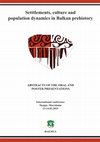
by Miroslav Razum, Ivica Pleština, Gábor Kalla, Marius Bâsceanu, Neda Mirković-Marić, Martina Celhar, Sonja Kačar, Ina Miloglav, Nedko Elenski, Alexandra Comsa, Zrinka Premužić, Carmen Cuenca-García, Ivan Vranic, Damjan Donev, Vasilka Dimitrovska, Lujana Paraman, Petya Georgieva, Tzvetana Popova, Lilian Dogiama, Dragan Jovanovic, Seta Štuhec, Ana Đuričić, Catherine COMMENGE, Lidija Kovacheva, Jan Zachar, Snježana Vrdoljak ex Karavanić, Katalin Sebők, Marta Rakvin, Alexandra Anders, Roxana Munteanu, Iharka Szücs-Csillik, Gianluca Cantoro, Nataša Miladinović-Radmilović, Maja Kuzmanovic, Marina Vladimirova, and Jovan D . Mitrović Settlements, Culture and Population Dynamics in Balkan Prehistory - ABSTRACTS OF THE ORAL AND POSTER PRESENTATIONS, Mar 9, 2015
HAEMUS - Center for Scientific Research and Promotion of Culture
http://haemus.org.mk
Settlemen... more HAEMUS - Center for Scientific Research and Promotion of Culture
http://haemus.org.mk
Settlements, Culture and Population Dynamics in Balkan Prehistory
International Conference
13-14.03.2015
Skopje, Republic of Macedonia
ABSTRACTS OF THE ORAL AND POSTER PRESENTATIONS
General Editor: Vasilka Dimitrovska
Cover Design: Vasilka Dimitrovska, Elka Anastasova
Design: Elka Anastasova
Editing and English proofreading: Mark Branov
Papers by Dragan Jovanovic

BIBLIOTHECA HISTORICA ET ARCHAEOLOGICA BANATICA, 2023
This paper explores the social context of the development of channel-decorated pottery characteri... more This paper explores the social context of the development of channel-decorated pottery characteristic of the Late Bronze Age tradition at a settlement with associated cemetery in the south-central area of the Pannonian Plain. These are the site of Gradište-Iđoš and the cemetery of Budžak-Livade in the north of Serbian Banat (Figures 1 and 2). Our objective is to better understand how and why this broad family of channel-decorated pottery developed in the south Pannonian Plain around 1400 B.C. We begin with the predecessor Belegiš I ceramic shape and ware group. We then discuss Belegiš II ceramics with respect to absolutely dated archaeological contexts at the above mentioned sites, as part of an ongoing research program.1 Further consideration of the relationship of Belegiš I and II to other groups in time and space are treated in other contributions in this volume, providing a broader context for this paper.

Journal of Field Archaeology, 2020
A newly discovered network of later Bronze Age fortified sites of unusually large size are discus... more A newly discovered network of later Bronze Age fortified sites of unusually large size are discussed, with a primary focus on results of excavations at the site of Gradište Iđoš. Closely associated with the rivers Mureš, Tisza, and Danube, these sites are located in the southeast of the Carpathian Basin in central Europe. On current evidence, the main period of construction and occupation took place between 1400-1100 B.C., probably constituting successor communities of the tell-centred societies of the Middle Bronze Age. Geophysical survey and excavation results from Gradište Iđoš, the largest site in this network in Serbia, are presented in this paper within their regional context. We discuss preliminary insights into the structural development of the site, alongside a correlation of new 14 C dates with relative ceramic chronological markers and the results of faunal analysis. These results provide new perspectives on settlement systems at the dawn of Urnfield cultural traditions in this region.
Rethinking Migrations in Late Prehistoric Eurasia, 2023
Email us for a full copy of the paper - address at end of PDF.
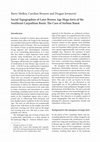
The Early History of War and Conflict. Edited by Svend Hansen and Rüdiger Krause, 2022
It is widely recognised that the Carpathian Basin was an important region of cultural innovation ... more It is widely recognised that the Carpathian Basin was an important region of cultural innovation in the Late Bronze Age, yet in its south-east quadrant, our knowledge of where and how people were living remains fragmentary. This paper presents new research into settlement archaeology in that region by providing data on a newly discovered network of enclosed sites close to the River Tisza and River Danube in the Banat region of Serbia. It is apparent that well-resourced, socially complex and closely linked communities were living there. We further argue that communities extended beyond the site-specific and may have possessed regional-scale configurations in terms of their organisation and structure. It is shown that many exhibit defined features arising from intentional planning/design. Finally, we present preliminary thoughts on how these densely spaced sites may relate to each other organisationally and consider the role of built enclosures in these societies.
Proceedings of the British Academy, 2022

Journal of Field Archaeology, 2020
A newly discovered network of later Bronze Age fortified sites of unusually large size are discus... more A newly discovered network of later Bronze Age fortified sites of unusually large size are discussed, with a primary focus on results of excavations at the site of Gradište Iđoš. Closely associated with the rivers Mureš, Tisza, and Danube, these sites are located in the southeast of the Carpathian Basin in central Europe. On current evidence, the main period of construction and occupation took place between 1400-1100 B.C., probably constituting successor communities of the tell-centred societies of the Middle Bronze Age. Geophysical survey and excavation results from Gradište Iđoš, the largest site in this network in Serbia, are presented in this paper within their regional context. We discuss preliminary insights into the structural development of the site, alongside a correlation of new 14 C dates with relative ceramic chronological markers and the results of faunal analysis. These results provide new perspectives on settlement systems at the dawn of Urnfield cultural traditions in this region.
АРХЕОЛОШКА ТОПОГРАФИЈА БАНАТА 2 Општина Чока, 2016
Arheološka topografija Banata 1, Opština Novi Kneževac. , 2012

Journal of the Serbian Archaeological Society, 2018
The site of Vatin (Serbia), after which the Bronze Age culture in the north-central Balkans was n... more The site of Vatin (Serbia), after which the Bronze Age culture in the north-central Balkans was named, has largely been destroyed by intensive human activity in the recent past (entailing primarily sand extraction). Therefore, although discovered more than a century ago, (what remained of) the site has not yet been adequately investigated. As a result, incredibly little is known about the site’s extent, layout, duration, economy, social structure, symbolism, and virtually any other aspect of life in this settlement. This is despite the existence of a museum collection comprising thousands of archaeological finds gathered during the very limited previous excavations of the site and/or purchased from the Vatin village inhabitants and landowners. The recently initiated multidisciplinary archaeological research at Vatin aims at shedding light on some of the aspects of life of the Bronze Age community. It includes archaeological prospection of the assumed area of the site and beyond, and small-scale excavation in the apparently intact parts of the site. Within the latter, soil samples have been taken from the excavated areas and floated to recover plant remains. Here we report on first archaeobotanical results for Bronze Age Vatin based on the analysis of twenty-one samples. The samples are of low botanical density and the number of plant remains is very modest. The taxonomic diversity, however, is considerable and includes several crops, few potentially gathered wild plants, and a number of arable/ruderal taxa. The preliminary results from Vatin are comparable to the data obtained for other Vatin culture sites in the area.

The Late Bronze Age fortification of Gradište Idjoš in its regional context
Commanding a position near the edge of a loess plateau in the southern reaches of the central Car... more Commanding a position near the edge of a loess plateau in the southern reaches of the central Carpathian Basin, the site of Gradište Idjoš (variously called Gradište kod Kikinde, Gradište near Idjoš or Idjoš Gradište in literature) in Serbian Banat is a major fortified site of the Later Bronze Age. Our investigations are refining its chronology, though the major phase of settlement appears to belong to c. 15th to 9th century BC, with a possible gap from the 11th to the 10th century BC. Clearly visible in historic maps of the area and in early aerial photographs (Fig. 1), the central fortification consists of a sub-circular rampart probably surrounded by a fosse and up to three other curvilinear ditches at progressively farther distances, all evident from a geophysical survey and aerial imagery. We will begin with a brief overview of the landscape setting of the site, followed by a description of the history of research. We then present an overview of the results of our geophysical survey and excavations at the site in 2014 and 2015, leading up to a preliminary discussion of the ceramics to demonstrate the chronology of the occupation. We conclude with a discussion of the social environment of the site in the Bronze Age, set within the landscape of the »mega-forts« within and bordering the geographical and historical region of Banat (an area now shared by Hungary, Romania and Serbia).

PDF Coming soon!
Commanding a position near the edge of a loess plateau
in the southern reach... more PDF Coming soon!
Commanding a position near the edge of a loess plateau
in the southern reaches of the central Carpathian
Basin, the site of Gradište Idjoš (variously called
Gradište kod Kikinde, Gradište near Idjoš or Idjoš
Gradište in literature) in Serbian Banat is a major fortified
site of the Later Bronze Age. Our investigations
are refining its chronology, though the major phase
of settlement appears to belong to c. 15th to 9th century
BC, with a possible gap from the 11th to the 10th century
BC. Clearly visible in historic maps of the area and in
early aerial photographs (Fig. 1), the central fortification
consists of a sub-circular rampart probably surrounded
by a fosse and up to three other curvilinear
ditches at progressively farther distances, all evident
from a geophysical survey and aerial imagery. We will
begin with a brief overview of the landscape setting
of the site, followed by a description of the history of
research. We then present an overview of the results
of our geophysical survey and excavations at the site
in 2014 and 2015, leading up to a preliminary discussion
of the ceramics to demonstrate the chronology of
the occupation. We conclude with a discussion of the
social environment of the site in the Bronze Age, set
within the landscape of the »mega-forts« within and
bordering the geographical and historical region of
Banat (an area now shared by Hungary, Romania and
Serbia).

The tradition of exploitation and production of stone artefacts at Lojanik is very long, covering... more The tradition of exploitation and production of stone artefacts at Lojanik is very long, covering several archaeological periods, from early prehistory until nowadays. Direct acquisition of raw materials and artefacts from the Lojanik mine to the settlements from the Early Neolithic (Crkvine) and the Late Neolithic (Divlje Polje) near Kraljevo, has been confirmed. In the last three years, since the archaeological
site Lojanik has been the subject of concern of museums and institutes for the cultural and natural heritage protection, a paradox is obvious, namely, although the entire zone formally presents a protected natural monument, it has been exposed to devastation for decades. During 2016, a set of broad archeological investigations was conducted,
from mapping to analysing the main concentrations of human activities, i.e. stone raw materials mining from the Palaeolithic to modern times, which represents the first level of protection of this specific site. A total of seven archaeological clusters (chipped artefact concentrations) was recognized, mapped and analysed on the top of the Lojanik hill, where each cluster represents specific activities, from extraction zones to the places for production of tools. At Crkvine, the results of test-trenching showed that an Early Neolithic occupational horizon presents a space outside the residential structures. According to the characteristics of the shape, texture and decoration of ceramic pots, the relative chronological determination of this horizon approaches to the earlier phases of the Starčevo culture. The Mataruge rock-shelter presents another prospective prehistoric habitat, but it can be precisely defined only after previous preparation and realization of a protection project.
Keywords: Lojanik, Crkvine–Konarevo, stone raw materials, opals, silicified wood, exploitation, quarry, mine, Paleolithic, Neolithic, technology of chipped artefacts

The tradition of exploitation and production of stone artefacts at Lojanik is
very long, covering... more The tradition of exploitation and production of stone artefacts at Lojanik is
very long, covering several archaeological periods, from early prehistory until nowadays.
Direct acquisition of raw materials and artefacts from the Lojanik mine to the
settlements from the Early Neolithic (Crkvine) and the Late Neolithic (Divlje Polje)
near Kraljevo, has been confirmed. In the last three years, since the archaeological
site Lojanik has been the subject of concern of museums and institutes for the cultural
and natural heritage protection, a paradox is obvious, namely, although the entire zone
formally presents a protected natural monument, it has been exposed to devastation
for decades. During 2016, a set of broad archeological investigations was conducted,
from mapping to analysing the main concentrations of human activities, i.e. stone raw
materials mining from the Palaeolithic to modern times, which represents the first level
of protection of this specific site. A total of seven archaeological clusters (chipped artefact
concentrations) was recognized, mapped and analysed on the top of the Lojanik
hill, where each cluster represents specific activities, from extraction zones to the places
for production of tools. At Crkvine, the results of test-trenching showed that an Early
Neolithic occupational horizon presents a space outside the residential structures. According
to the characteristics of the shape, texture and decoration of ceramic pots, the
relative chronological determination of this horizon approaches to the earlier phases of
the Starčevo culture. The Mataruge rock-shelter presents another prospective prehistoric
habitat, but it can be precisely defined only after previous preparation and realization
of a protection project.
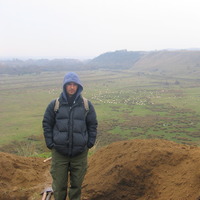
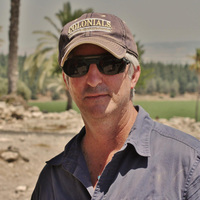


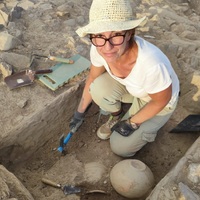






Uploads
Books by Dragan Jovanovic
http://haemus.org.mk
Settlements, Culture and Population Dynamics in Balkan Prehistory
International Conference
13-14.03.2015
Skopje, Republic of Macedonia
ABSTRACTS OF THE ORAL AND POSTER PRESENTATIONS
General Editor: Vasilka Dimitrovska
Cover Design: Vasilka Dimitrovska, Elka Anastasova
Design: Elka Anastasova
Editing and English proofreading: Mark Branov
Papers by Dragan Jovanovic
https://global.oup.com/academic/product/rethinking-migrations-in-late-prehistoric-eurasia-9780197267356?view=Grid&facet_narrowbyproducttype_facet=Print&facet_narrowbybinding_facet=Hardback&facet_narrowbyprice_facet=50to100&facet_narrowbypubdate_facet=Next%203%20months&lang=en&cc=bh#
Commanding a position near the edge of a loess plateau
in the southern reaches of the central Carpathian
Basin, the site of Gradište Idjoš (variously called
Gradište kod Kikinde, Gradište near Idjoš or Idjoš
Gradište in literature) in Serbian Banat is a major fortified
site of the Later Bronze Age. Our investigations
are refining its chronology, though the major phase
of settlement appears to belong to c. 15th to 9th century
BC, with a possible gap from the 11th to the 10th century
BC. Clearly visible in historic maps of the area and in
early aerial photographs (Fig. 1), the central fortification
consists of a sub-circular rampart probably surrounded
by a fosse and up to three other curvilinear
ditches at progressively farther distances, all evident
from a geophysical survey and aerial imagery. We will
begin with a brief overview of the landscape setting
of the site, followed by a description of the history of
research. We then present an overview of the results
of our geophysical survey and excavations at the site
in 2014 and 2015, leading up to a preliminary discussion
of the ceramics to demonstrate the chronology of
the occupation. We conclude with a discussion of the
social environment of the site in the Bronze Age, set
within the landscape of the »mega-forts« within and
bordering the geographical and historical region of
Banat (an area now shared by Hungary, Romania and
Serbia).
site Lojanik has been the subject of concern of museums and institutes for the cultural and natural heritage protection, a paradox is obvious, namely, although the entire zone formally presents a protected natural monument, it has been exposed to devastation for decades. During 2016, a set of broad archeological investigations was conducted,
from mapping to analysing the main concentrations of human activities, i.e. stone raw materials mining from the Palaeolithic to modern times, which represents the first level of protection of this specific site. A total of seven archaeological clusters (chipped artefact concentrations) was recognized, mapped and analysed on the top of the Lojanik hill, where each cluster represents specific activities, from extraction zones to the places for production of tools. At Crkvine, the results of test-trenching showed that an Early Neolithic occupational horizon presents a space outside the residential structures. According to the characteristics of the shape, texture and decoration of ceramic pots, the relative chronological determination of this horizon approaches to the earlier phases of the Starčevo culture. The Mataruge rock-shelter presents another prospective prehistoric habitat, but it can be precisely defined only after previous preparation and realization of a protection project.
Keywords: Lojanik, Crkvine–Konarevo, stone raw materials, opals, silicified wood, exploitation, quarry, mine, Paleolithic, Neolithic, technology of chipped artefacts
very long, covering several archaeological periods, from early prehistory until nowadays.
Direct acquisition of raw materials and artefacts from the Lojanik mine to the
settlements from the Early Neolithic (Crkvine) and the Late Neolithic (Divlje Polje)
near Kraljevo, has been confirmed. In the last three years, since the archaeological
site Lojanik has been the subject of concern of museums and institutes for the cultural
and natural heritage protection, a paradox is obvious, namely, although the entire zone
formally presents a protected natural monument, it has been exposed to devastation
for decades. During 2016, a set of broad archeological investigations was conducted,
from mapping to analysing the main concentrations of human activities, i.e. stone raw
materials mining from the Palaeolithic to modern times, which represents the first level
of protection of this specific site. A total of seven archaeological clusters (chipped artefact
concentrations) was recognized, mapped and analysed on the top of the Lojanik
hill, where each cluster represents specific activities, from extraction zones to the places
for production of tools. At Crkvine, the results of test-trenching showed that an Early
Neolithic occupational horizon presents a space outside the residential structures. According
to the characteristics of the shape, texture and decoration of ceramic pots, the
relative chronological determination of this horizon approaches to the earlier phases of
the Starčevo culture. The Mataruge rock-shelter presents another prospective prehistoric
habitat, but it can be precisely defined only after previous preparation and realization
of a protection project.
http://haemus.org.mk
Settlements, Culture and Population Dynamics in Balkan Prehistory
International Conference
13-14.03.2015
Skopje, Republic of Macedonia
ABSTRACTS OF THE ORAL AND POSTER PRESENTATIONS
General Editor: Vasilka Dimitrovska
Cover Design: Vasilka Dimitrovska, Elka Anastasova
Design: Elka Anastasova
Editing and English proofreading: Mark Branov
https://global.oup.com/academic/product/rethinking-migrations-in-late-prehistoric-eurasia-9780197267356?view=Grid&facet_narrowbyproducttype_facet=Print&facet_narrowbybinding_facet=Hardback&facet_narrowbyprice_facet=50to100&facet_narrowbypubdate_facet=Next%203%20months&lang=en&cc=bh#
Commanding a position near the edge of a loess plateau
in the southern reaches of the central Carpathian
Basin, the site of Gradište Idjoš (variously called
Gradište kod Kikinde, Gradište near Idjoš or Idjoš
Gradište in literature) in Serbian Banat is a major fortified
site of the Later Bronze Age. Our investigations
are refining its chronology, though the major phase
of settlement appears to belong to c. 15th to 9th century
BC, with a possible gap from the 11th to the 10th century
BC. Clearly visible in historic maps of the area and in
early aerial photographs (Fig. 1), the central fortification
consists of a sub-circular rampart probably surrounded
by a fosse and up to three other curvilinear
ditches at progressively farther distances, all evident
from a geophysical survey and aerial imagery. We will
begin with a brief overview of the landscape setting
of the site, followed by a description of the history of
research. We then present an overview of the results
of our geophysical survey and excavations at the site
in 2014 and 2015, leading up to a preliminary discussion
of the ceramics to demonstrate the chronology of
the occupation. We conclude with a discussion of the
social environment of the site in the Bronze Age, set
within the landscape of the »mega-forts« within and
bordering the geographical and historical region of
Banat (an area now shared by Hungary, Romania and
Serbia).
site Lojanik has been the subject of concern of museums and institutes for the cultural and natural heritage protection, a paradox is obvious, namely, although the entire zone formally presents a protected natural monument, it has been exposed to devastation for decades. During 2016, a set of broad archeological investigations was conducted,
from mapping to analysing the main concentrations of human activities, i.e. stone raw materials mining from the Palaeolithic to modern times, which represents the first level of protection of this specific site. A total of seven archaeological clusters (chipped artefact concentrations) was recognized, mapped and analysed on the top of the Lojanik hill, where each cluster represents specific activities, from extraction zones to the places for production of tools. At Crkvine, the results of test-trenching showed that an Early Neolithic occupational horizon presents a space outside the residential structures. According to the characteristics of the shape, texture and decoration of ceramic pots, the relative chronological determination of this horizon approaches to the earlier phases of the Starčevo culture. The Mataruge rock-shelter presents another prospective prehistoric habitat, but it can be precisely defined only after previous preparation and realization of a protection project.
Keywords: Lojanik, Crkvine–Konarevo, stone raw materials, opals, silicified wood, exploitation, quarry, mine, Paleolithic, Neolithic, technology of chipped artefacts
very long, covering several archaeological periods, from early prehistory until nowadays.
Direct acquisition of raw materials and artefacts from the Lojanik mine to the
settlements from the Early Neolithic (Crkvine) and the Late Neolithic (Divlje Polje)
near Kraljevo, has been confirmed. In the last three years, since the archaeological
site Lojanik has been the subject of concern of museums and institutes for the cultural
and natural heritage protection, a paradox is obvious, namely, although the entire zone
formally presents a protected natural monument, it has been exposed to devastation
for decades. During 2016, a set of broad archeological investigations was conducted,
from mapping to analysing the main concentrations of human activities, i.e. stone raw
materials mining from the Palaeolithic to modern times, which represents the first level
of protection of this specific site. A total of seven archaeological clusters (chipped artefact
concentrations) was recognized, mapped and analysed on the top of the Lojanik
hill, where each cluster represents specific activities, from extraction zones to the places
for production of tools. At Crkvine, the results of test-trenching showed that an Early
Neolithic occupational horizon presents a space outside the residential structures. According
to the characteristics of the shape, texture and decoration of ceramic pots, the
relative chronological determination of this horizon approaches to the earlier phases of
the Starčevo culture. The Mataruge rock-shelter presents another prospective prehistoric
habitat, but it can be precisely defined only after previous preparation and realization
of a protection project.
Serbia, is well known in the archaeological literature of the region. Excavated on several
occasions since 1913, the site is best known for the existence of a late Neolithic settlement where
material culture belonging to both Vinča and Tisza communities was found in the same archaeological
contexts. Furthermore, the site is known for a 250 metre diameter fortified settlement from the
Late Bronze/Early Iron Age period. А new research cycle was initiated in 2014 in order to explain
cultural processes during prehistory in this part of the Pannonian basin. The first season of the
new research campaign was focused on geophysical prospection of an area of approximately 2
hectares, geological coring and excavation of four stratigraphic trenches across the site. This
work has confirmed the existence of up to 2.5 metres of archaeological remains on the tell site
with several daub structures detected and the existence of numerous archaeological features within
the Late Bronze - Iron Age settlement.
of surface, subsurface prospection, geophysical research, prospection from the air, as well as various other methods
that can provide relevant information.
Lidija (National Museum at Kikinda); Salamon, Aleksandar (National Museum at Zrenjanin)_________________________________________________________________________________________________________Until recently, knowledge of settlement design and pattern in the south-eastern Carpathian Basin during the Late Bronze Age has primarily arisen from microregional studies. The excavation of several large enclosed sites, coined mega-forts, in the last decade has begun to provide better information on aspects of social organization. However, limited progress has been made on understanding the ties that link these individual sites in their landscape and societal contexts.
Radiocarbon dating programs at some of these sites indicate that we can speak of a horizon of mega-forts which emerged in the late 15th century BC, after the abandonment of tells, and continued to be occupied into the 13th century BC. The chronology and character of their abandonment remains unclear. With more than 10 now known, the rise of these forts is associated with the development of smaller but related settlement forms and the spread of channel-decorated pottery throughout the region. Though diversity of settlement and pottery style remains, it is argued that similarities increased in the south-eastern Carpathian basin at this time.
Using Google Earth survey and ground-truthing for prospection, we have identified new sites in a network now totalling more than 40 settlements. These are set back from major rivers that would have facilitated inward and outward diffusion of ideas and materials. We argue for intentional design in the construction of sites, indicative of premeditated and coordinated planning. It is particularly noteworthy that many factors indicate that competition was probably subordinated to cooperation at an intra-site level. Commanding riverine communication networks and sharing common purpose, we believe these sites constituted a significant socio-political block or blocks. All this, we argue, is evidence for complex social relationships that extend beyond specific settlements and represent a collective regional social organization that exercised control at a landscape rather than settlement level.
Lead Isotope Analysis (LIA) has been applied most often as a means of provenancing copper at the macro scale. Here we use LIA at the regional scale to expose the relationship between long-distance communication and local metal management strategies. We conducted lead isotope and chemical analysis on 82 objects and ingots from Late Bronze Age hoards of the south Carpathian Basin, a node in long distance networks. From a social perspective, results indicate the presence of a community of practice of metalworkers that went beyond sociopolitical boundaries. Analyses of ingots demonstrate that communities imported copper from a variety of distant sources, but local circulation and specific mixing and recycling practices created a characteristic chemical signature unique to this region. Moreover, metalworkers' choices of copper sources were tailored to specific object types. From an analytical perspective, we demonstrated that the frequent mixing of copper from different sources with varying lead concentrations to make objects resulted in the masking of LIA signatures for some sourceswe termed these 'ghost fractions' in mixturesby others with more lead.
Societies of the later Early to Middle Bronze Age (ca. 2200–1600 BC) in the Carpathian Basin exhibited complex, hierarchical and regionally influential socio-political organisation that came to an abrupt end in the 16th century BC. Considered a collapse by some, this change was characterised by abandonment of virtually all central places / nodes in settlement networks. Until recently, the complexity that characterised the period was believed to have substantially diminished alongside depopulation. This model was reinforced by a combination of the loss of established external networks and low-resolution knowledge of where and how people lived in the first stages of the Late Bronze Age (between 1600 and 1200 BC). We contest the idea of a diminished Late Bronze Age and argue that a fully opposite trajectory can be identified–increased scale, complexity and density in settlement systems and intensification of long-distance networks. We present results of a settlement survey in the southern Pannonian Plain using remote and pedestrian prospection, augmented by small-scale excavations. New absolute dates are used to define the occupational history of sites dating primarily between 1500–1200 BC. We argue that climate change played a substantial role in in the transformation of settlement networks, creating a particular ecological niche enabling societies to thrive. New and specific forms of landscape exploitation developed that were characterised by proximity to wetlands and minor watercourses. In this context, the largest monuments of Bronze Age Europe were created and inhabited. In considering the origins and demise of these megasites and related settlements, we provide a new model for Late Bronze Age societies in the Carpathian Basin and their regional relevance.